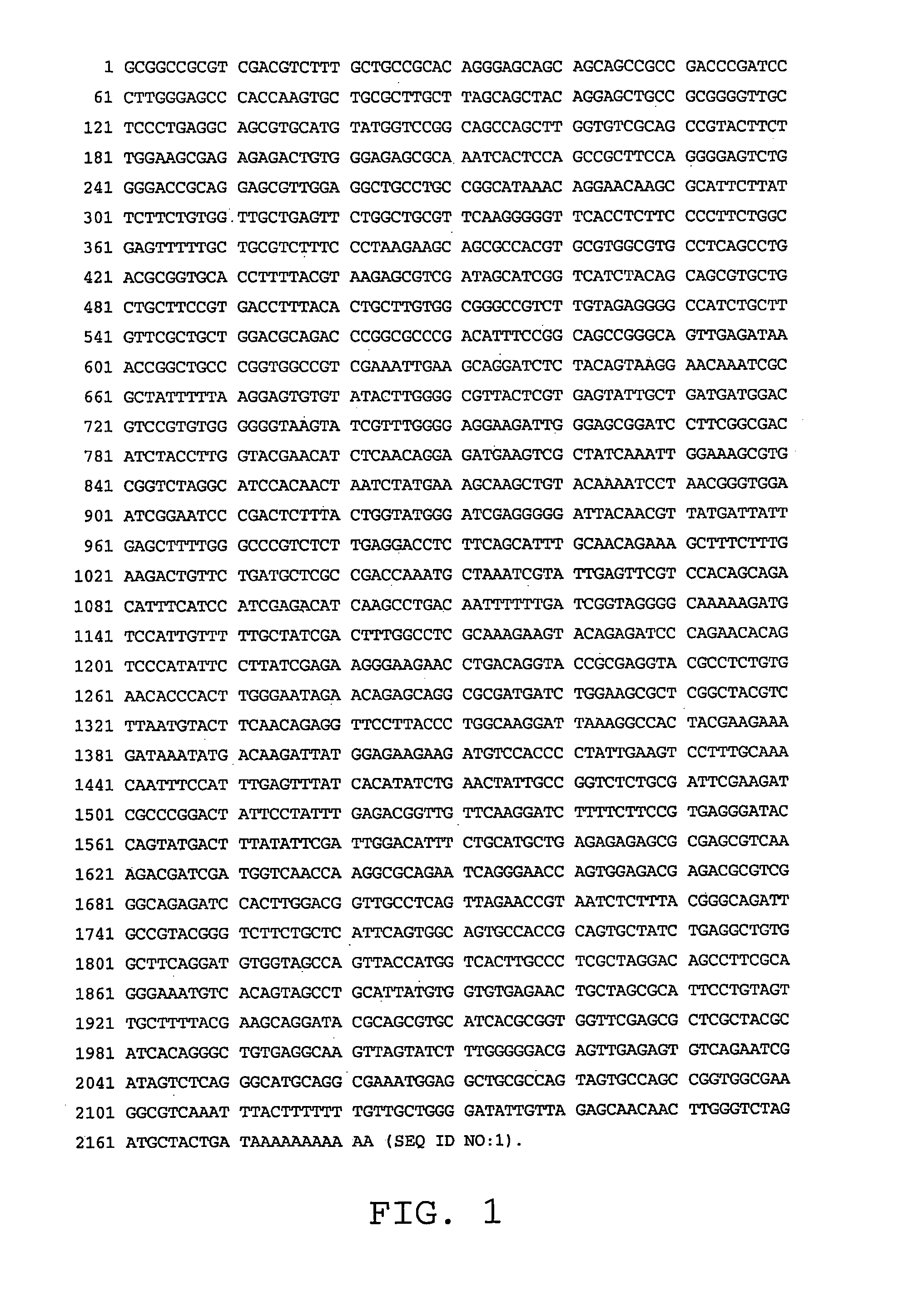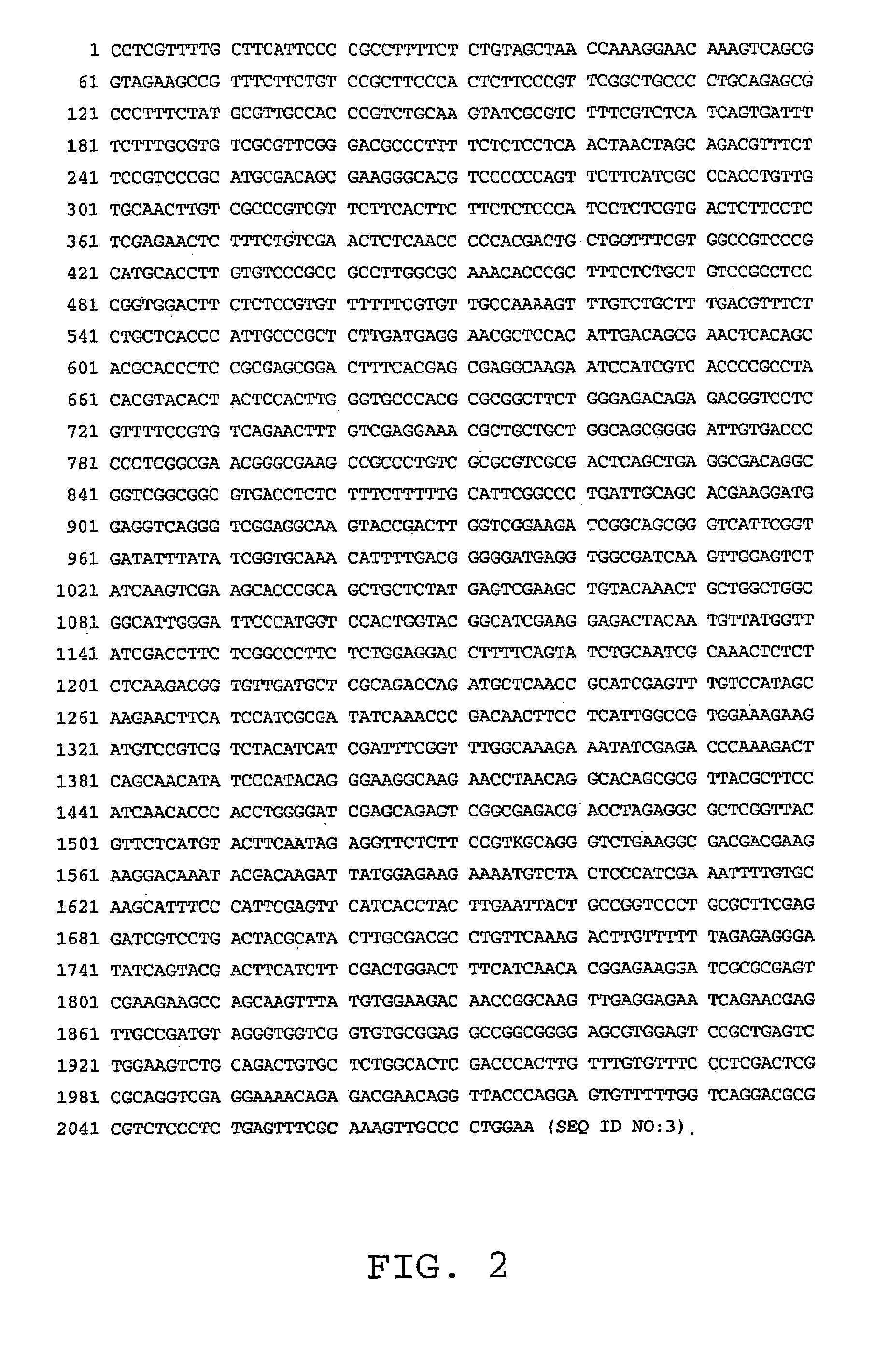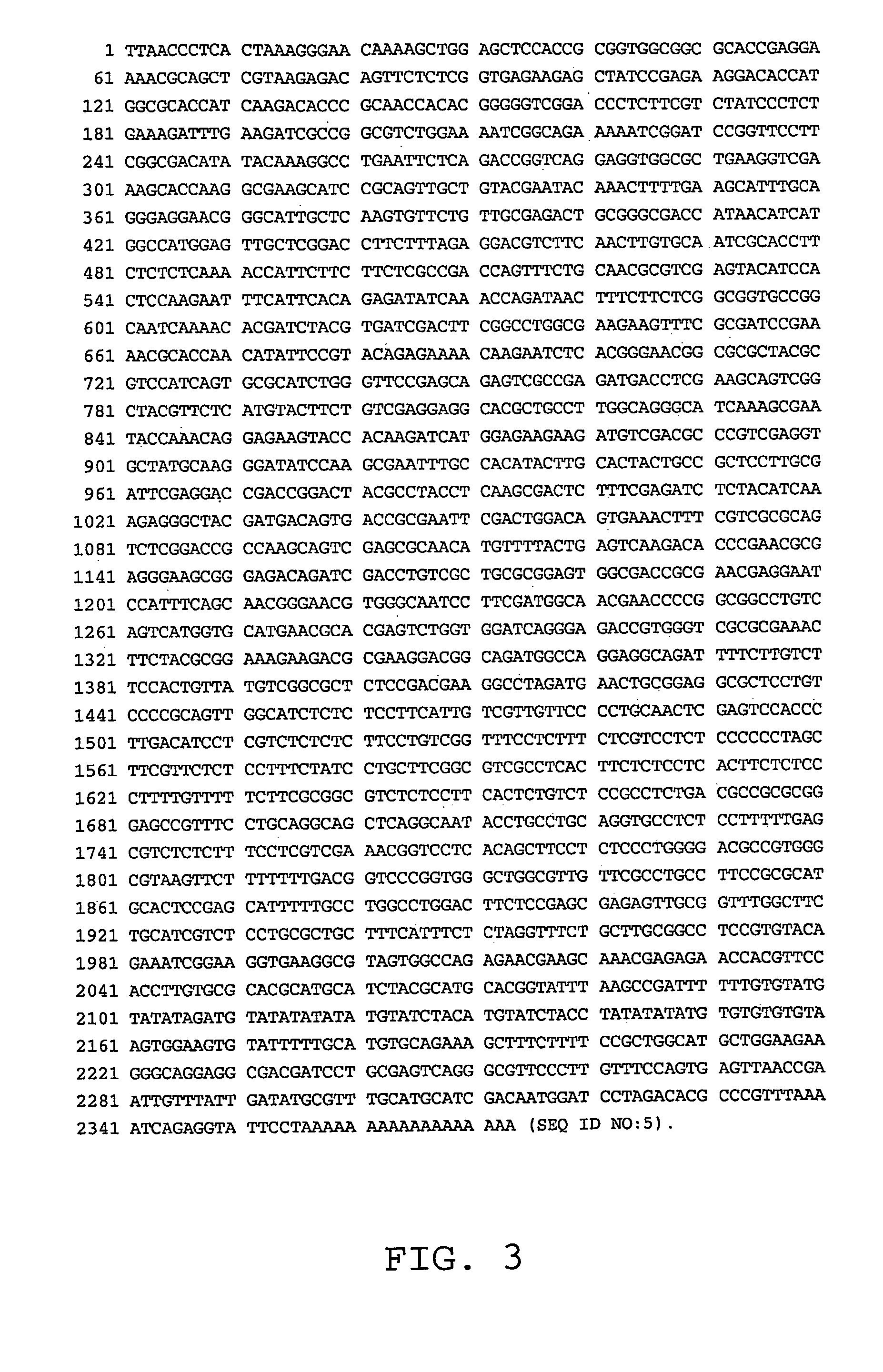Polynucleotides encoding coccidian parasite casein kinase I, a chemotherapeutic target for antiprotozoal agents
a technology of coccidian parasite and kinase, which is applied in the field of polynucleotides encoding coccidian parasite casein kinase i, a chemotherapeutic target for antiprotozoal agents, can solve the problems of significant toxicity accompanies this treatment regime, and the mortality and/or morbidity of congenital infections and immunocompromised patients are significan
- Summary
- Abstract
- Description
- Claims
- Application Information
AI Technical Summary
Problems solved by technology
Method used
Image
Examples
example 1
Identification of cDNAs Encoding Coccidian Parasite Casein Kinase I
[0160]Cloning of Toxoplasma gondii CKIα and CKIβ-BLAST searching of the Toxoplasma EST database (http: / / www.toxodb.org / ToxoDB.shtml) identified a pair of overlapping ESTs (GenBank BM175598 and T62400) with homology to a CKI consensus sequence derived from a ClustalW alignment of CKI enzymes characterized from a variety of organisms (AlignX, Vector NTI suite). The Toxoplasma EST sequences identified are listed below:
[0161]
BM175598(SEQ ID NO:7)AGAATTTCATTCACAGAGATATCAAACCAGATAACTTTCTTCTCGGCGGTGCCGGCAATCAAAACACGATCTACGTGATCGACTTCGGCCTGGCGAAGAAGTTTCGCGATCCGAAAACGCACCAACATATTCCGTACAGAGAAAACAAGAATCTCACGGGAACGGCGCGCTACGCGTCCATCAGTGCGCATCTGTGTTCCGAGCAGAGTCGCCGAGATGACCTCGAAGCAGTCGGCTACGTTCTCATGTACTTCTGTCGAGGAGGCACGCTGCCTTGGCAGGGCATCAAAGCGAATACCAAACAGGAGAAGTACCACAAGATCATGGAGAAGAAGATGTCGACGCCCGTCGAGGTGCTATGCAAGGGATATCCAAGCGAATTTGCCACATACTTGCACTACTGCCGCTCCTTGCGATTCGAGGACCGACCGGACTACGCCTACCTCAAGCGACTCTTTCGAGATCTCTACATCAAAGAGGGCTA...
example 2
Transient Expression of Coccidian Casein Kinase I Isoforms in T. gondii
[0166]Epitope tagged constructs—N-terminal FLAG epitope tags were appended to TgCKIα and TgCKIβ open reading frames by PCR amplification (KOD polymerase, Novagen; Madison, Wis.). The sense and antisense PCR primers used to amplify the open frames are as follows:
[0167]
ATGGACTACAAAGACGATGACGACAAGGAGGTCAGGGTCGGAGGCAAGTACCGAC (SEQ ID NO: 24) and CGGTCTAGATCAGAGGGAGACGCGCGTCCTGACC (SEQ ID NO: 25) for TgCKIα; and ATGGACTACAAAGACGATGACGACAAGGCGGACCATCAAGACACCCGCAAC (SEQID NO: 26) and CGGTCTAGATCAAAAAAAGAACTTACGCCCACGGCGT (SEQ ID NO: 27) for TgCKIβ.
The resulting DNA fragments were subcloned into E. coli pETblue1 (Novagen). For subcloning into T. gondii tubulin-promoter expression vectors (Donald, R. G. K. and Liberator, P. A., 2002, Mol. Biochem. Parasitol. 120:165-175), sense primers bearing additional 5′ compatible restriction enzyme recognition sites (BamHI and BclI) were used:
[0168]
GGCGGATCCGAAAATGGACTACAAAGACGATGAC...
example 3
Purification and Characterization of the Coccidian CKI Isoforms
[0182]Purification of recombinant CKI enzymes—E. coli strain BL21 Origami™ (Novagen) was transformed with FLAGTgCKIα and FLAGTgCKIβ expression vectors, and colonies were expanded into 250 mL LB cultures grown at 37° C. Expression was induced with 1 mM IPTG once cultures had reached an OD600nm of 0.3-0.5, and the transformed bacteria were harvested 4-6 hours later. Cell pellets were resuspended in 15 mL of lysis buffer containing protease inhibitors and lysates prepared as described by the supplier (Bugbuster™ reagents, Novagen). The concentration of NaCl in the lysate was adjusted to 0.5 M, and 0.5 mL of FLAG-agarose beads were added (Sigma). The mixture was allowed to rock in a Nutator mixer (Becton-Dickinson; San Jose, Calif.) for 2 hours at 4° C. The slurry was then poured into an empty column and the matrix washed with 50 mL of wash buffer (50 mM Tris-HCl, pH 7.4, 0.5M NaCl, 10% glycerol, 1 mM DTT, 1 mM EDTA). Enzyme...
PUM
| Property | Measurement | Unit |
|---|---|---|
| Tm | aaaaa | aaaaa |
| pH | aaaaa | aaaaa |
| temperature | aaaaa | aaaaa |
Abstract
Description
Claims
Application Information
 Login to View More
Login to View More - R&D
- Intellectual Property
- Life Sciences
- Materials
- Tech Scout
- Unparalleled Data Quality
- Higher Quality Content
- 60% Fewer Hallucinations
Browse by: Latest US Patents, China's latest patents, Technical Efficacy Thesaurus, Application Domain, Technology Topic, Popular Technical Reports.
© 2025 PatSnap. All rights reserved.Legal|Privacy policy|Modern Slavery Act Transparency Statement|Sitemap|About US| Contact US: help@patsnap.com



